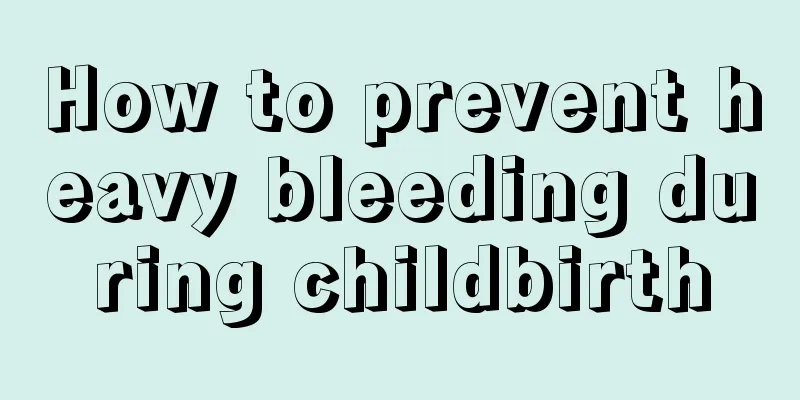How to feed salmon to babies How to feed salmon to babies

|
Salmon is one of the fish that many people like to eat. Salmon is rich in nutrients, tastes delicious and has high nutritional value. There are some things to pay attention to when babies eat salmon. How to feed salmon to babiesSalmon puree Applicable people: Babies over 5 months old Ingredients: 100 grams of salmon meat, 1 gram of refined salt, 1 gram of white sugar. Preparation method: 1. Put the cleaned salmon into boiling water, peel off the salmon skin after cooking, remove the salmon bones and grind the salmon meat, then wrap it in a clean cloth and squeeze out the water. 2. Put the salmon meat into the pot, add sugar and salt and stir well, then add 200 grams of boiling water and cook until the salmon meat is soft. Key to preparation: Use fresh salmon as raw material, be sure to remove the bones and cook the salmon meat until it is tender. Tomato Salmon Applicable people: Babies over 6 months old Ingredients: 100g salmon meat, 70g tomatoes, 2g salt, 200g soup. Preparation method: 1. Put the cleaned salmon into boiling water, remove the bones and skin, blanch the tomatoes in boiling water, peel them and cut them into small pieces. 2. Pour the soup into the pot, add the salmon meat and cook. After cooking for a while, add chopped tomatoes and salt, then cook over low heat until it becomes a paste. Key points: Choose fresh salmon as the raw material. Make sure to remove the bones and cook the salmon until tender. Do not use too high a fire when cooking. Salmon and pork floss porridge Applicable people: Babies aged 7-8 months Ingredients: 1 ounce of rice, 0.5 ounce of salmon floss, 0.5 ounce of spinach, a little salt, and an appropriate amount of water. Production: 1. Wash the rice, put it into a pot, pour in clean water and bring to a boil over high heat, then simmer over low heat until it becomes thick (note that the porridge must be cooked until it is soft and sticky). 2. Wash the spinach, blanch it with boiling water, cut it into small pieces, put it into the porridge, add salmon floss and fine salt, adjust the taste, and simmer over low heat for a few minutes. Salmon Dumplings Applicable people: Babies over 9 months old Ingredients: 500g flour, 500g fresh salmon, 150g leeks, 75g fatty pork, 30g sesame oil, 40g soy sauce, 15g refined salt, 5g MSG, 25g cooked peanut oil, 5g cooking wine. Preparation method: 1. Chop the salmon meat and fat into fine pieces, add 250 grams of chicken broth and stir into a paste. Then add salt, soy sauce, and MSG. Continue stirring until it becomes a thick paste. Add leeks (wash and chop), sesame oil, and cooking wine and mix well to make the filling. 2. Add 25 grams of peanut oil and 230 grams of warm water to the flour, mix well, knead into dough, pinch into 10 pieces of dough for every 50 grams (dry flour), roll into small round skins, add stuffing and wrap into small dumplings for later use. 3. Pour water into the pot, put the dumplings in after it boils, and use a spoon to slowly push and turn the dumplings in the pot while putting them in. When the dumplings float up and the filling and skin are bulging, take them out and they are done. Fresh and Fragrant Steamed Salmon Applicable people: Babies over 1 year old Ingredients: 0.5 pound of salmon, a few scallions (1 cup after dicing), 1/4 cup of ginger (minced), 4 cloves of garlic (minced), 1/3 cup of fresh soy sauce, 4 teaspoons of cooking wine, 2 teaspoons of vegetable oil, 1 teaspoon of sugar (optional). Preparation method: 1. Peel and clean the salmon, cut into pieces (1 inch wide and 2-3 inches long), put into a steaming tray, and add 4 spoons of cooking wine. 2. After the water in the steamer boils, place the steaming tray with the fish in it, cover and steam for 20 minutes. 3. Stir-fry the sauce: add 2 spoons of vegetable oil to a hot wok, add onion, ginger and garlic and sauté until fragrant; add soy sauce and sugar and stir-fry. 4. Take out the steamed fish plate, pour the steamed fish juice into the fried onion, ginger and garlic sauce, mix well, pour it on the steamed salmon and serve. Salmon and glutinous rice wine custard Applicable people: Babies over 2 years old Ingredients: 4 eggs, salmon meat, fresh shrimp, mushrooms, Chinese cabbage, fish roe, salt, fermented glutinous rice, pepper, broth, coriander. Preparation method: 1. Dice the salmon, peel the shrimps and keep the tails, add a little salt, pepper and fermented glutinous rice, mix well and set aside. 2. Cut mushrooms into shreds and slice choy sum, wash and set aside. Beat eggs, add water and mix well, add a little salt, mix well and filter with a fine mesh colander. 3. Brush a small bowl with oil and put the salmon meat in it. Add the filtered egg juice until it is 80% full. Add the shredded mushrooms and cabbage slices, and add the fresh shrimp along the edge of the bowl. 4. Pour 2 cups of warm water (about 40 degrees) into the baking tray, place a small bowl on it, and bake in the oven (preheated to 180 degrees) for about 10 minutes; you can also cover it with plastic wrap and steam it in a steamer. 5. After it is cooked, sprinkle with fresh fish roe and coriander. (You can also drizzle with a little sesame oil) How to prepare salmon for babies1. Salmon puree Applicable people: Babies over 6 months old Ingredients: 100g salmon meat Preparation method: 1. Clean the fresh salmon, put it into boiling water, peel off the salmon skin after cooking, remove the salmon bones (be sure to remove all the bones), grind the salmon meat, then wrap it with a clean cloth and squeeze out the water. 2. Put the salmon into the pot, add 200 grams of boiling water, and cook until the salmon is soft. Because salmon is delicious and has no fishy smell, no seasoning is needed. 2. Salmon and Tomato Soup Applicable people: Babies over 12 months old Ingredients: 100 grams of salmon meat, 70 grams of tomatoes, 2 grams of fine salt, 200 grams of soup. Preparation method: 1. Put the cleaned salmon into boiling water, remove the bones and skin, blanch the tomatoes in boiling water, peel them and cut them into small pieces. 2. Pour the soup into the pot, add the salmon meat and cook. After cooking for a while, add chopped tomatoes and salt, then cook over low heat until it becomes a paste. 3. Fresh and fragrant steamed salmon Applicable people: Babies over 1 year old Ingredients: 40g fresh salmon, some onion, some ginger, a few cilantro stems, a few drops of steamed fish soy sauce, a few drops of olive oil Preparation method: 1. Select fresh salmon and clean it, cut it into pieces (1 inch wide and 23 inches long), cut onion and ginger into shreds, and chop coriander stems into fine pieces. 2. Cut half of the onion and ginger into shreds and spread them on a plate; place the salmon on the onion and ginger shreds, and then place the other half of the onion and ginger shreds on top of the fish. 3. After the water in the steamer boils, place the steaming plate with the fish on the steamer, cover it with the lid, and steam for 3-4 minutes after you see steam. 4. Prepare the sauce: Heat the pan over low heat until slightly hot, add a few drops of olive oil (don’t heat the oil too hot), add a few drops of steamed fish soy sauce, add a tablespoon of boiling water, then pour into a bowl, add a little chopped coriander and mix well. 5. Gently transfer the steamed salmon to another plate, pour the prepared sauce on it and serve. 4. Salmon balls Applicable people: Babies over 1 year old Ingredients: salmon, eggs, starch, onion, ginger, olive oil, salt, chicken powder, thirteen spices; Cooking method: 1. Chop ginger and onion into fine pieces, mince the fish, and remove the white from the egg; 2. Mix the chopped fish, onion, ginger, appropriate amount of starch, salt, chicken powder, thirteen spices, and olive oil together, then stir vigorously in one direction with your hands or chopsticks; 3. Knead the mixed filling into balls of uniform size; 4. Add an appropriate amount of water to the pot, then heat it. When you see some bubbles appear in the water, you can put the fish balls in. It should be noted that the water should not be boiled during the process of putting the fish balls in, and the water temperature should be kept around 50 to 60 degrees. 5. After all the fish balls are made, bring the water to a boil over high heat and continue cooking the balls for one or two minutes. 5. Salmon Dumplings Applicable people: Babies over 9 months old Ingredients: 500g flour, 500g fresh salmon, 150g leeks, 75g pork, 30g sesame oil, 40g soy sauce, 15g refined salt, 5g MSG, 25g cooked peanut oil, 5g cooking wine. Preparation method: 1. Chop the salmon meat and fat into fine pieces, add 250 grams of chicken broth and stir into a paste. Then add salt, soy sauce, and MSG. Continue stirring until it becomes a thick paste. Add leeks (wash and chop), sesame oil, and cooking wine and mix well to make the filling. 2. Add 25 grams of peanut oil and 230 grams of warm water to the flour, mix well, knead into dough, pinch into 10 pieces of dough for every 50 grams (dry flour), roll into small round skins, add stuffing and wrap into small dumplings for later use. 3. Pour water into the pot, put the dumplings in after it boils, and use a spoon to slowly push and turn the dumplings in the pot. When the dumplings float up and the filling and skin are bulging, take them out and they are done. 6. Salmon Cake Applicable people: Babies over 18 months old Main ingredients: 450g flour, 250g milk, appropriate amount of salmon cubes Accessories: 150g sugar, 150g butter, 4 eggs, 25g baking powder, 1 teaspoon vanilla essence practice: 1. Beat the butter and sugar until white, then add eggs one by one, gradually add milk after beating well, and add vanilla essence. 2. Mix the baking powder and flour, add to "1" after mixing well, and finally add the diced salmon. 3. After mixing well, put it into a squeezing bag, squeeze it into the mold, and bake it in the oven (200 degrees for 15 minutes). The delicious dessert with a soft texture, rich nutrition and rich flavor is ready. 7. Salmon Custard Applicable people: Babies over 10 months old Ingredients: 50g salmon, 2 eggs, 2g salt, 2ml sesame oil. practice: 1. Chop the salmon and prepare 2 eggs. 2. Beat the eggs, add salt and oil, stir evenly, sieve once, and place on a pot of boiling water. 3. Cover with a plate and lid and steam for 8 minutes. 4. After 8 minutes, pour in the salmon puree, cover and steam for 2 minutes, turn off the heat, and steam for 5 minutes. Things to know about salmon for babies1. Salmon is a deep-sea fish with rich nutrition, but it is considered as an allergy food by the elderly. Babies should not eat salmon when they have a cold, getting angry or having inflammation, otherwise the condition may be aggravated. Babies under one year old should be fed with appropriate amount and observed carefully, as some babies may be allergic to salmon. 2. The color of salmon is directly proportional to its nutritional value. The darker the orange-red color, the higher the value and the fresher it is. This is because the darker the color, the higher the astaxanthin content it contains, which is different from choosing other salmon. 3. Salmon should not be eaten with persimmons. The protein in salmon will combine with the tannic acid in persimmons to form tannic acid protein, which will accumulate in the human body and cause symptoms such as vomiting, abdominal pain, and poisoning. Benefits of eating salmon for childrenSalmon is a cold-water fish that grows in high-latitude areas such as Canada, Norway, Japan, Russia, and Jiamusi City, Heilongjiang Province, China. Salmon has tender meat, bright colors, and a smooth taste. In recent years, it has become a delicious dish on the family table. Fish is rich in complete protein. The amount and ratio of essential amino acids contained in fish protein are most suitable for human needs, and it is easily digested and absorbed by the human body, providing sufficient nutritional support for the baby's healthy physique. Salmon meat is orange-red, tender and has few bones. It is rich in astaxanthin and unsaturated fatty acids, which is very suitable for children to eat. Many families will choose salmon when adding complementary foods to their babies. First: salmon has high nutritional value. In addition to being a high-protein, low-calorie healthy food, salmon also contains a variety of vitamins and minerals such as calcium, iron, zinc, magnesium, and phosphorus. Salmon liver oil is also rich in vitamin D, which can promote the body's absorption and utilization of calcium and help growth and development. Not only that, salmon is also rich in unsaturated fatty acids. Among all fish, salmon contains the most omega-3 unsaturated fatty acids (about 27 grams per 100 grams of salmon). Nutritional research has shown that omega-3 unsaturated fatty acids are essential substances for the brain, retina, and nervous system, and are very helpful for the development of babies. Second: There is one biggest trouble with eating fish, that is "fish bones". When parents buy fish for their babies, in addition to considering the nutritional value of the fish itself, it is best to choose fish with fewer bones. Salmon has small scales and few bones, and its meat is orange-red. It is a fish with tender and delicious meat. Children are not likely to be in danger of being stuck by fish bones, and it is relatively safe to eat. Usually, we mostly eat salmon raw directly. The taste of raw salmon is also the best, and it is also rich in nutrition. However, eating salmon raw is not suitable for children, because they may have some parasites. The child's body has not yet fully developed and may not be able to withstand the invasion of parasites. Therefore, parents are better to use steaming, boiling, stewing and other methods. This way of eating is safer, lighter, and delicious. It is not suitable to use frying, roasting, frying and other methods. In addition, when cooking fish for children, vegetables can be added as side dishes, which not only increases the taste but also balances the nutrition. When stewing fish, you may wish to pair it with winter melon, mushrooms, radish, tofu, etc. But be careful, the taste should not be too salty, let alone add spicy and irritating seasonings, and chicken essence and MSG should be used less. |
<<: Can babies eat yellow peaches? How can babies eat yellow peaches better?
>>: What are the benefits of parents cultivating empathy in their children?
Recommend
What is a good name for a girl? What is an elegant and poetic name for a girl?
A person's name may change his or her life. A...
Is it good for pregnant women to show their pregnancy early? How many months does a pregnant woman show her pregnancy?
It is of course a happy thing to have a new life ...
Baby food supplementation order Baby food supplementation plan
When the baby grows to a certain size, complement...
Can pregnant women eat dumplings stuffed with leeks? Is it good for the fetus if pregnant women eat dumplings stuffed with leeks?
I heard that leeks can contract the female uterus...
What should I do if my baby is used to drinking milk from a bottle and doesn't want breast milk? The correct way to feed
For newborn babies, breast milk and formula are t...
Can bath towels still be used if they have black spots? How to remove black spots from bath towels?
I don't know what happened, but black spots a...
Is it better for babies to drink goat milk or cow milk? Is it better for babies to drink goat milk powder or cow milk powder?
Many parents have no idea when choosing milk powd...
What foods can help you have a girl?
What to eat to easily give birth to a girl? Today...
Can I have an abortion if I am pregnant and infected with Zika virus? Is it reasonable to wait 2 years before getting pregnant?
Recently, Brazil is worried that the Zika virus w...
What can I eat after a cesarean section? What can I not eat after a cesarean section?
Generally, women who have undergone cesarean sect...
Will a child with anemia get leukemia? What will happen if a child has anemia?
Usually anemia is a common symptom in children, a...
The horrible details of abortion surgery. Girls, do you still want to have an abortion?
The topic of abortion has always been a hot topic...
How to gradually reduce the frequency of breastfeeding? Distracting attention is very effective
Many mothers are troubled by weaning. They worry ...
Can pregnant women eat barbecue? You can still eat barbecue occasionally during pregnancy.
Barbecue is a kind of snack food that everyone li...
How long is the shelf life of Baoning soap? How to check the shelf life of Baoning soap?
Baoning soap is very popular in China. Many mothe...









